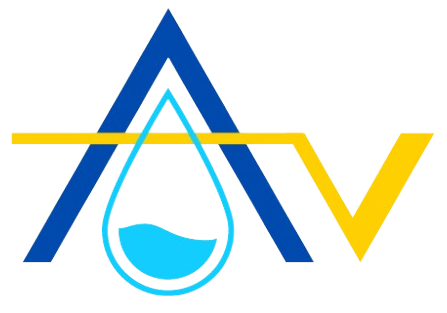French Drain: Material and Requirements

French drain materials and requirements are essential to build a higher efficiency French drain in the basement or crawlspace. When constructing a French drain, you should have proper tools and materials to increase the efficiency of the project. As well as you should also know the recommended requirements for the French drain construction. So here is the list of materials, tools, and requirements that Aqviz expert follow in their projects.
What Materials are needed for a French Drain?
These are the essential 6 materials and tools for the French drains.
- Perforated drain pipe
- Geotextile fabric
- French drain rocks
- Shovel or trenching tools
- Pipe fittings (elbows, couplers, end caps)
- Drainage outlets
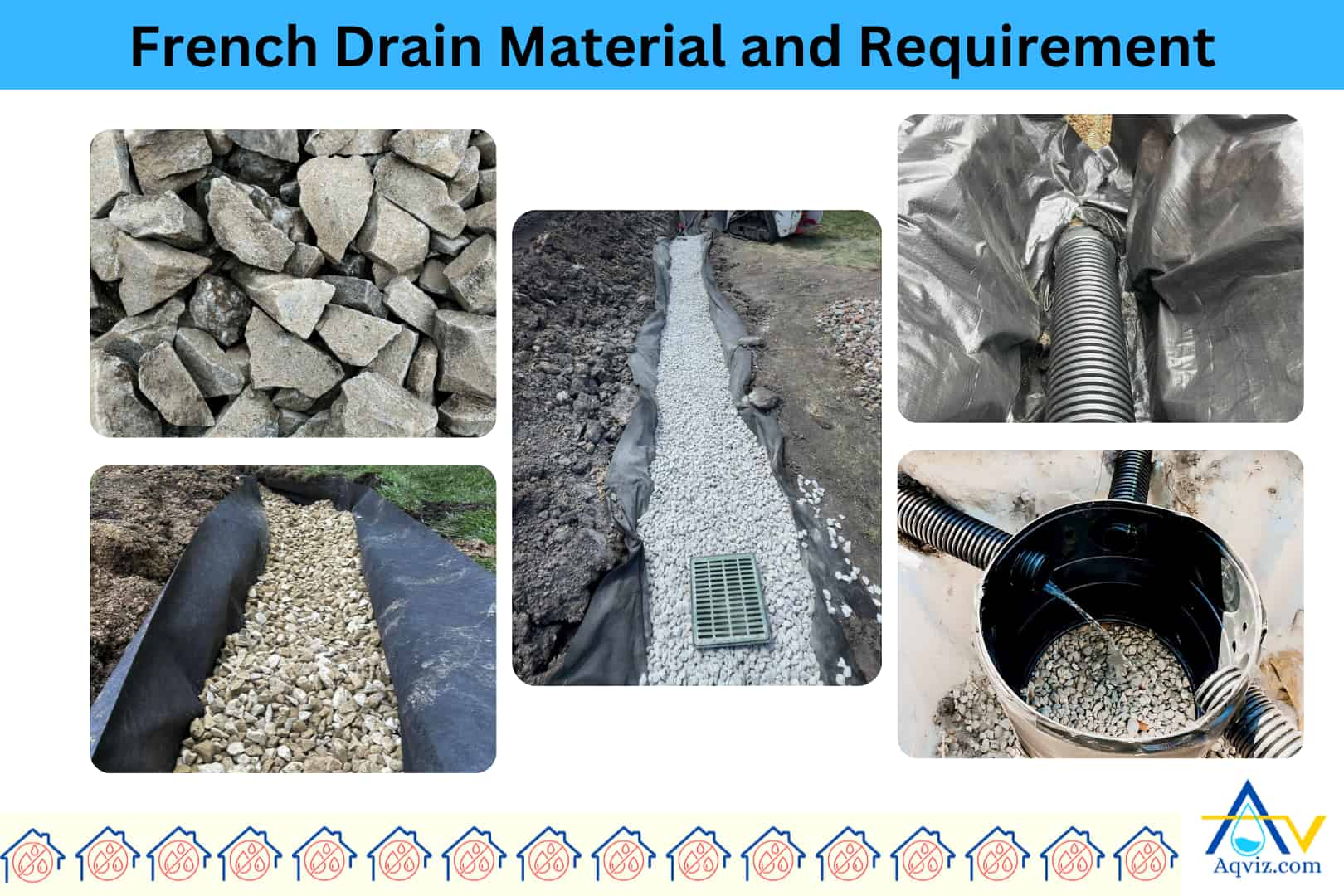
1. Perforated Drain Pipe
A perforated drain pipe is a flexible and rigid pipe designed with evenly spaced holes or slots along its surface to collect and redirect groundwater. It is the core component of a French drain system. It allows water to enter the pipe from the surrounding soil and flow toward a discharge point or sump basin.
The main purpose of using a perforated pipe is to relieve hydrostatic pressure and prevent water accumulation around foundations, basements, retaining walls, or low-lying landscapes.
It is available in standard diameters of 4 inches (100 mm) and 6 inches (150 mm). For most residential French drains, a 4-inch diameter is commonly used, while a 6-inch diameter suits commercial or high-volume systems.
Perforated pipes are made of PVC, HDPE (high-density polyethylene), and corrugated polyethylene. These materials improve the flexibility of the pipe and increase its crush resistance of the pipe.
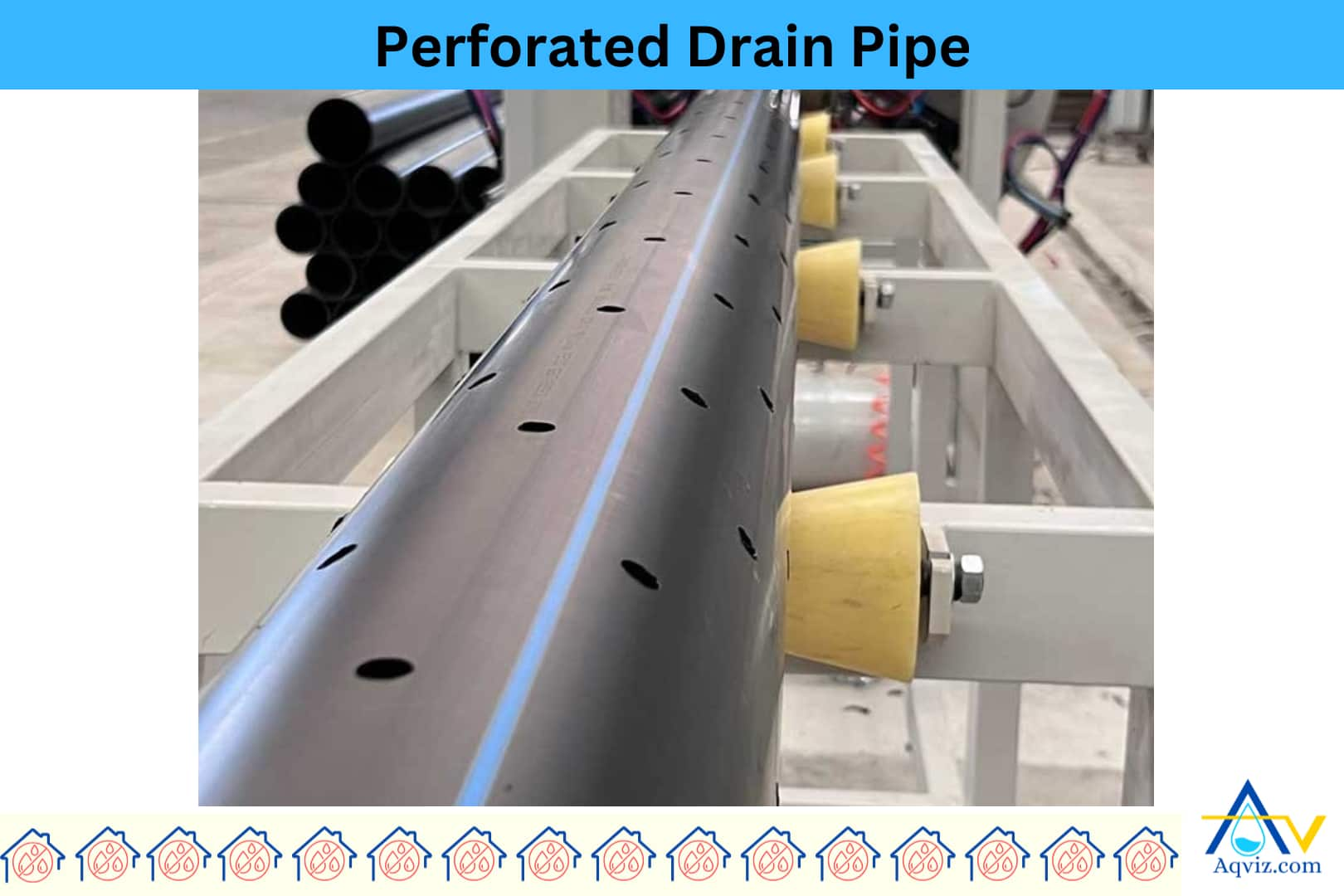
2. Landscape Fabric (Geotextile Filter Fabric)
Another important French drain material is a geotextile filter fabric. Geotextile filter fabric is a permeable synthetic textile used in French drain systems to separate soil from drainage components while allowing water to pass through. It prevents sediment, silt, and organic matter from entering the gravel layer and clogging the perforated pipe.
The main purpose of using geotextile fabric is to maintain long-term drainage efficiency by keeping the gravel clean and ensuring unrestricted water flow.
Geotextile Fabrics are available in various widths, typically 36 inches (91 cm), 48 inches (122 cm), and 60 inches (152 cm), and come in rolls up to 300 feet (91 meters) long.
Aqviz experts highly recommend you to use long-term performance; you should use a non-woven, needle-punched polypropylene fabric, which offers high filtration capability, strong tear resistance, and excellent permeability.
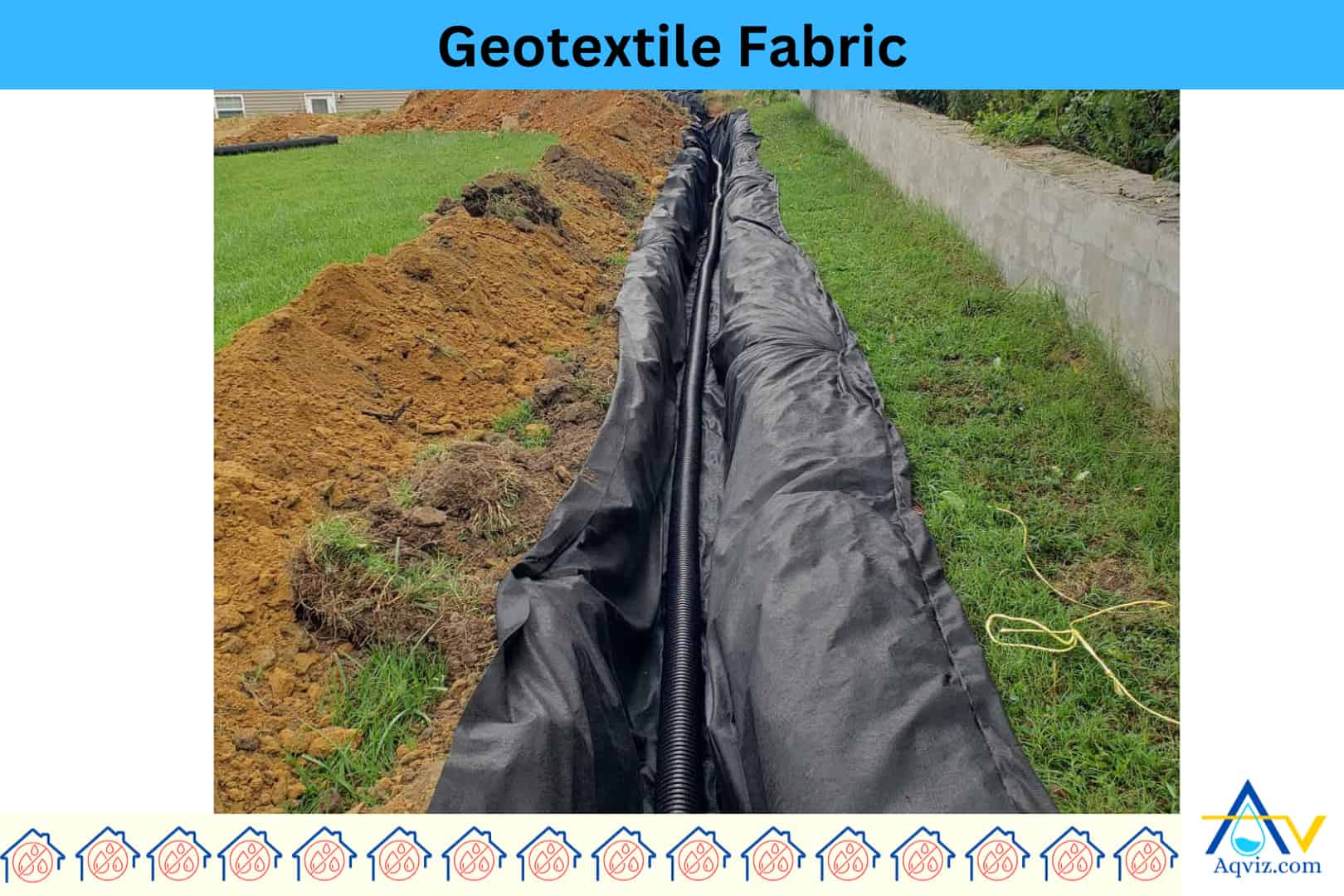
3. French Drain Rocks
French drain rocks refer to the gravel used to surround the perforated pipe and fill the trench. French drain rock creates a porous layer that allows water to flow freely while filtering out large debris. The main purpose of using drain rock is to facilitate water movement, reduce hydrostatic pressure, and protect the pipe from soil compaction.
The ideal gravel size is 3/4 inch (19 mm), which offers a perfect balance between drainage flow and structural stability. You should use washed angular gravel, such as crushed granite, crushed limestone, or drainage stone, because its sharp edges interlock well and prevent shifting.
The gravel should be clean, meaning free of dust, fines, and clay. You should avoid pea gravel, round river rock, or unwashed aggregate, as they compact poorly and can cause clogging. For long-term efficiency, always select gravel labeled for drainage use and avoid recycled concrete or construction fill for the french drains.
To calculate the French drain rock amount and cost, you should use this French drain rock calculator that is designed by the Aqviz experts.
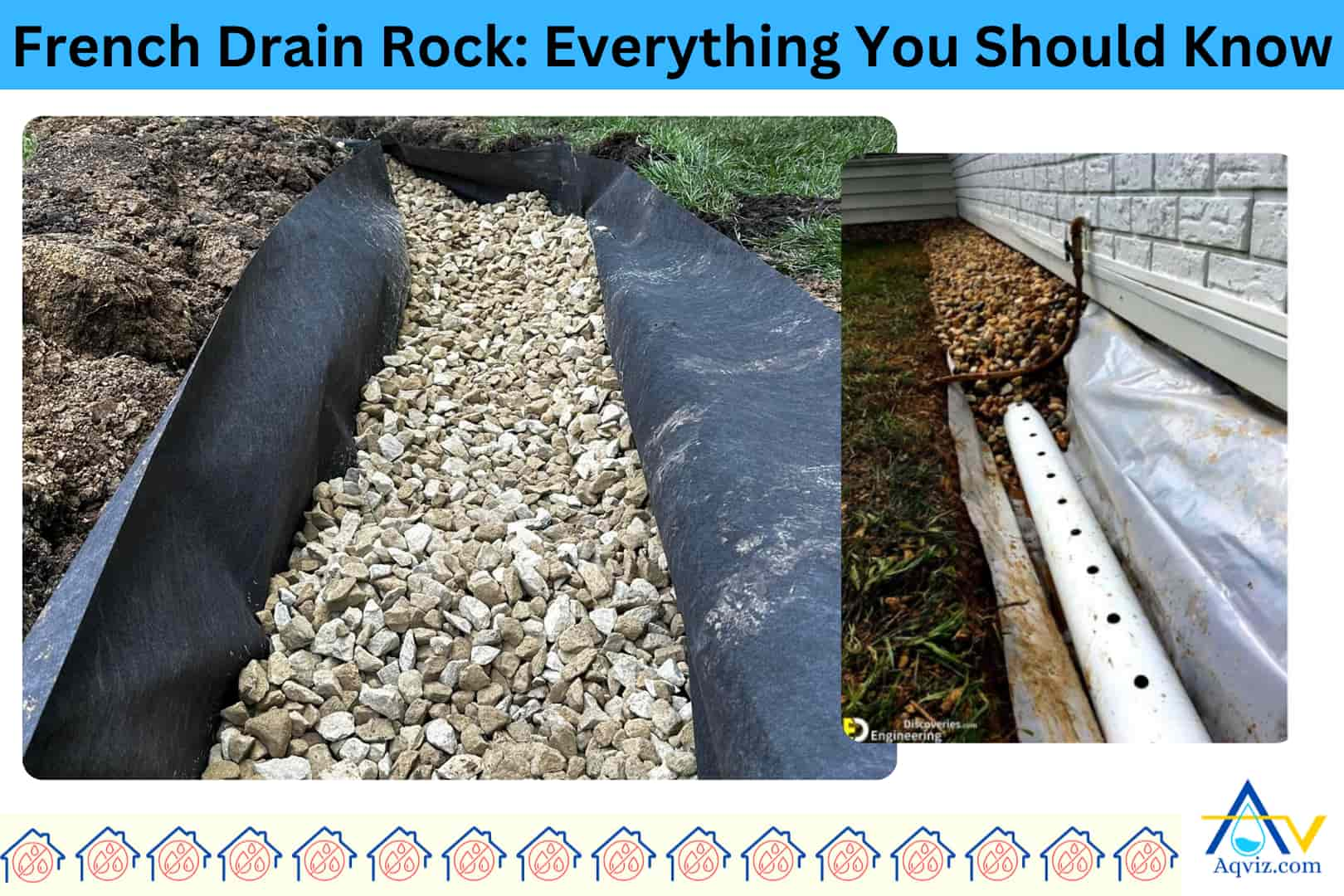
4. Shovel or Trenching Tool
A shovel or trenching tool is essential for digging and shaping the trench required for a French drain. The main purpose of using these tools is to excavate the soil to the proper depth and width, ensuring a consistent trench profile with the correct slope for water flow.
We highly recommend you to use a trenching shovel or narrow spade for precision work, especially when working in confined spaces or near foundations.
For larger areas, we recommend a trenching hoe or a powered trencher may speed up the excavation.
These tools help create a clean, uniform trench that supports accurate pipe placement and long-term drain performance.
5. Pipe Fittings (Elbows, Couplers, End Caps)
Pipe fittings such as elbows, couplers, and end caps are essential components used to connect, redirect, or seal sections of perforated or solid drain pipe in a French drain system.
The main purpose of using these fittings is to ensure a continuous, watertight flow path, accommodate trench turns, and terminate the system properly.
Elbows help you change pipe direction around corners or obstacles without bending the pipe. Couplers are used to join two straight sections of pipe securely. End caps seal off pipe ends to prevent soil or debris from entering the system.
You should choose fittings compatible with the pipe material (PVC or corrugated) and ensure they are tightly fitted or sealed using approved adhesive or rubber gaskets for long-term reliability.

6. Drainage Outlet or Dry Well
A drainage outlet or dry well is the termination point of a French drain system where collected water is discharged away from the structure. The main purpose of using a drain outlet is to safely direct or disperse groundwater collected by the drain into an appropriate exit point without causing erosion, flooding, or foundation damage.
What are the Requirements for a French Drain?
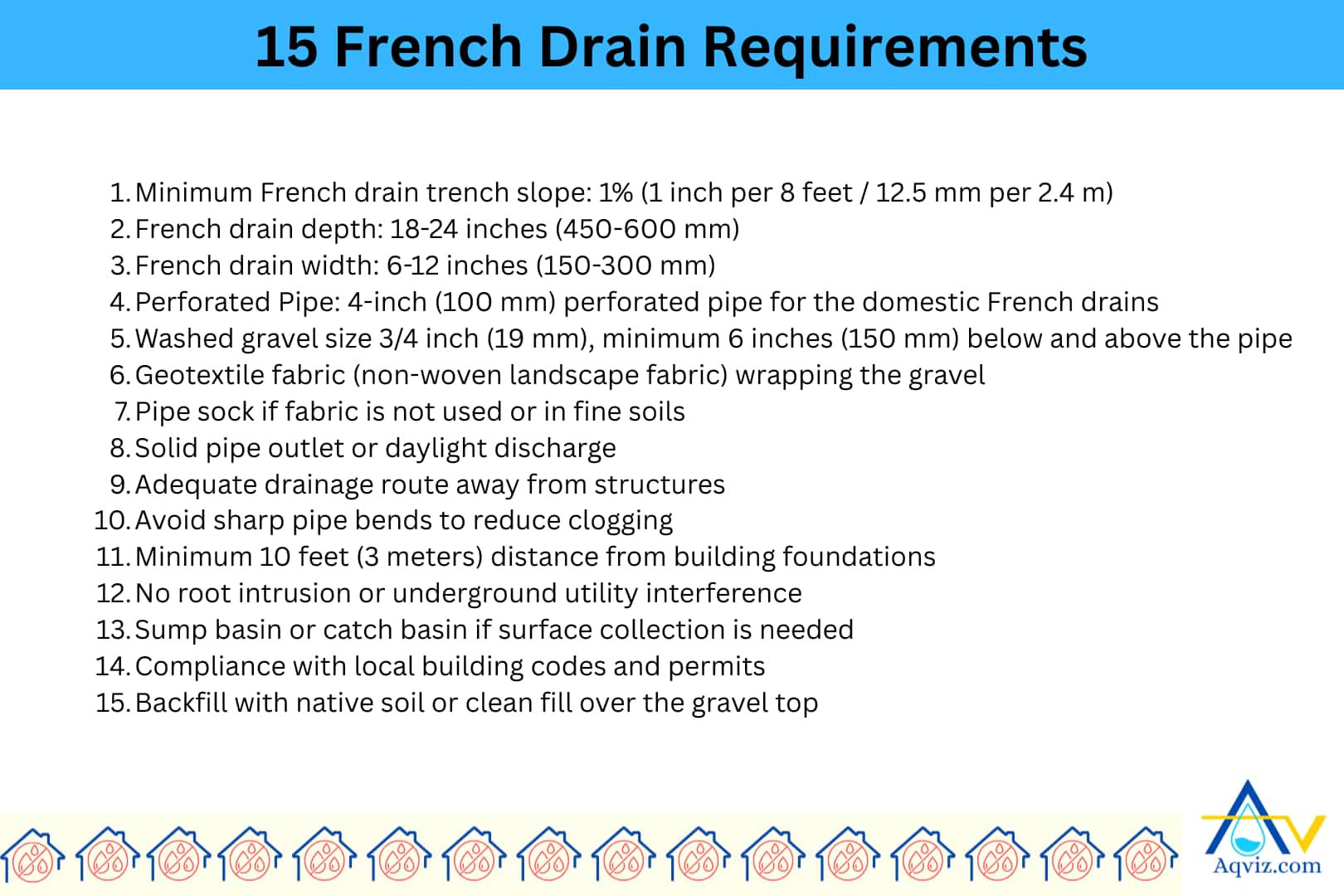
Here’s a list of recommended requirements for a proper French drain system:
- Minimum French drain trench slope: 1% (1 inch per 8 feet / 12.5 mm per 2.4 m)
- French drain depth: 18-24 inches (450-600 mm)
- French drain width: 6-12 inches (150-300 mm)
- Perforated Pipe: 4-inch (100 mm) perforated pipe for the domestic French drains
- Washed gravel size 3/4 inch (19 mm), minimum 6 inches (150 mm) below and above the pipe
- Geotextile fabric (non-woven landscape fabric) wrapping the gravel
- Pipe sock if fabric is not used or in fine soils
- Solid pipe outlet or daylight discharge
- Adequate drainage route away from structures
- Avoid sharp pipe bends to reduce clogging
- Minimum 10 feet (3 meters) distance from building foundations
- No root intrusion or underground utility interference
- Sump basin or catch basin if surface collection is needed
- Compliance with local building codes and permits
- Backfill with native soil or clean fill over the gravel top
